FUTURE CITIES
A Line in the sand: Saudi Arabia’s futuristic vertical city — or so it hopes
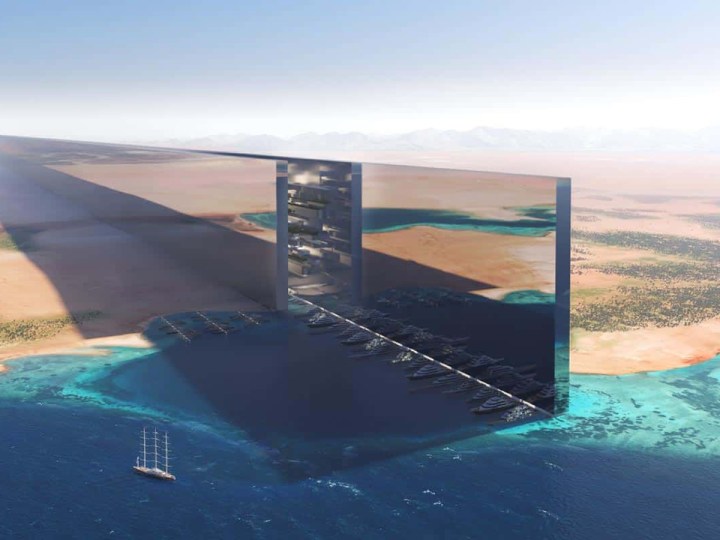
The first video rendering promises a city like no other, with no roads, no cars, no emissions, and built on a foundation of Artificial Intelligence and 100% renewable energy; that is, if it ever becomes a reality.
On 25 July 2022, Saudi Arabia unveiled its design concept for The Line, a futuristic city and one of three regions within Neom, a yet-to-be-built $500-billion megacity first announced by Saudi Crown Prince Mohammed bin Salman in 2017. According to the vision presented by the team behind the project, The Line will reimagine the very way in which cities have been constructed thus far.
Unlike traditional cities, which expand horizontally, it will be a vertical linear city, built to a height of 500m, 200m in width, and 170km long. All of this within an alleged footprint of no more than 34km². Contained within its mirrored walls, some nine million residents will have access to daily needs within a five-minute walk, and they will be able to travel end to end within 20 minutes via high-speed transportation.
There will be no cars, no emissions, no roads, and this promised city “will run on 100% renewable energy and 95% of land will be preserved for nature. People’s health and wellbeing will be prioritised over transportation and infrastructure, unlike traditional cities.” The climate will be perfect all year round through the establishment of microclimatic spaces that will “allow for an optimal balance of sunlight, shade and natural ventilation”. Artificial Intelligence will also play a huge role in powering automated services.

The Line, Neom. Image: Supplied
According to the crown prince, the leader of the world’s top crude oil exporter, “The Line will tackle the challenges facing humanity in urban life today and will shine a light on alternative ways to live. We cannot ignore the livability and environmental crises facing our world’s cities, and Neom is at the forefront of delivering new and imaginative solutions to address these issues.”
The wild, wild capitalist East
A May 2022 press release from the Saudi Press Agency states that the Neom “project will work within special economic zones that are subject to the sovereignty and economy of the Kingdom of Saudi Arabia in terms of security, defence and regulatory aspects”. However, “This will be accompanied by developing special economic legislations related to the project in a way that achieves the best concepts of governance of economic zones in the world.”
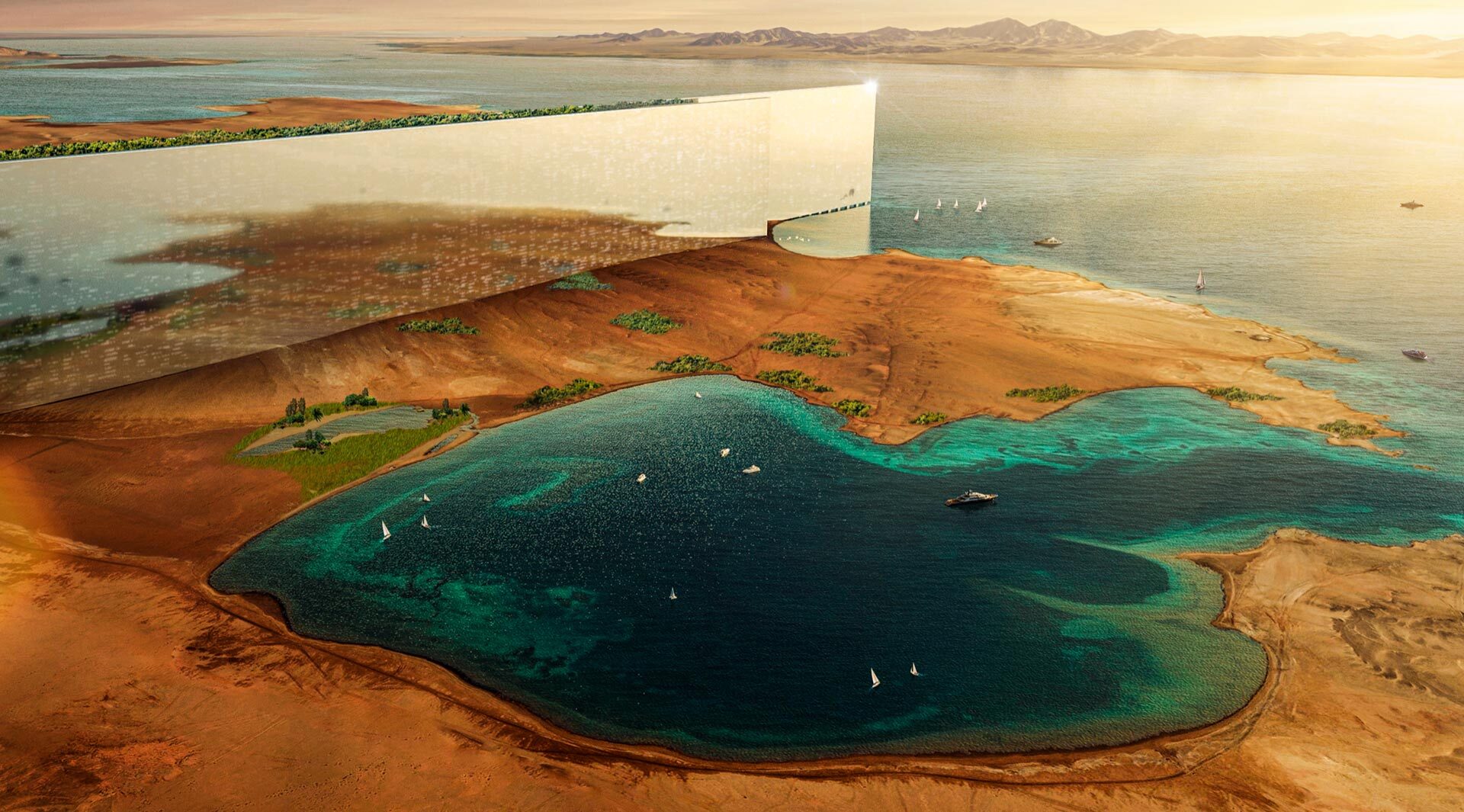
The Line, Neom. Image: Supplied

The Line, Neom. Image: Supplied
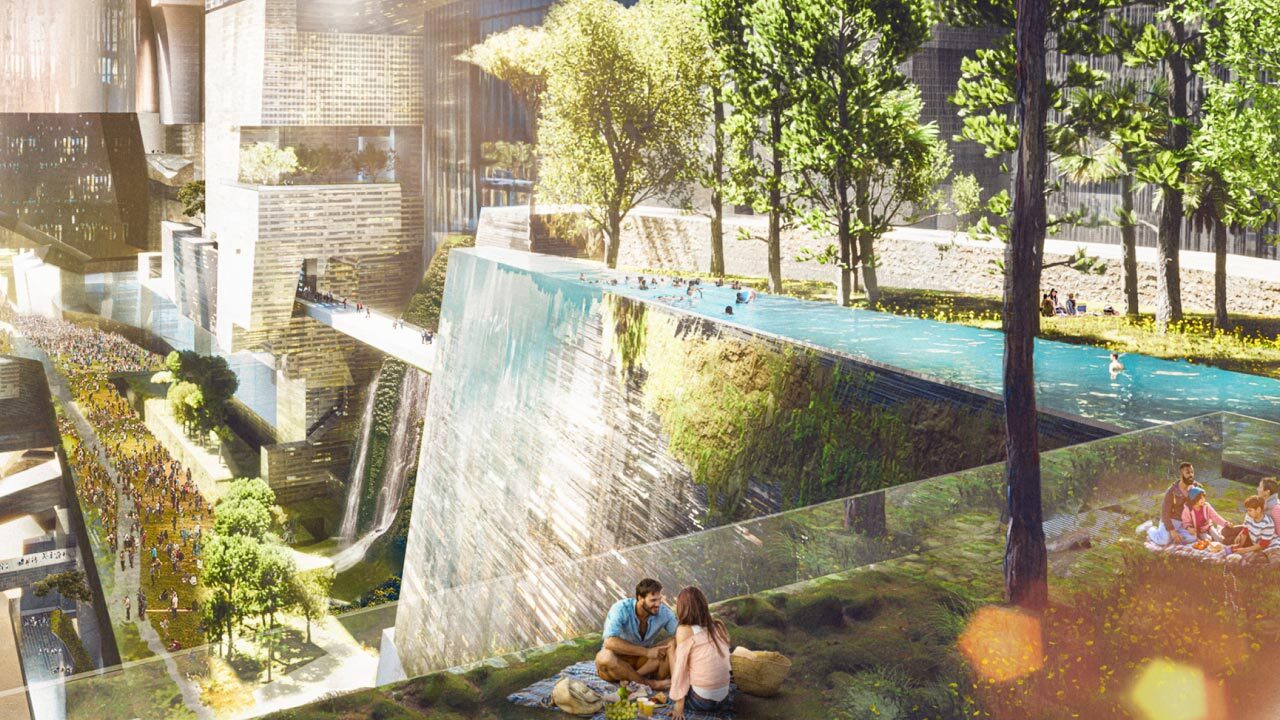
The Line, Neom. Image: Supplied

The Line, Neom. Image: Supplied
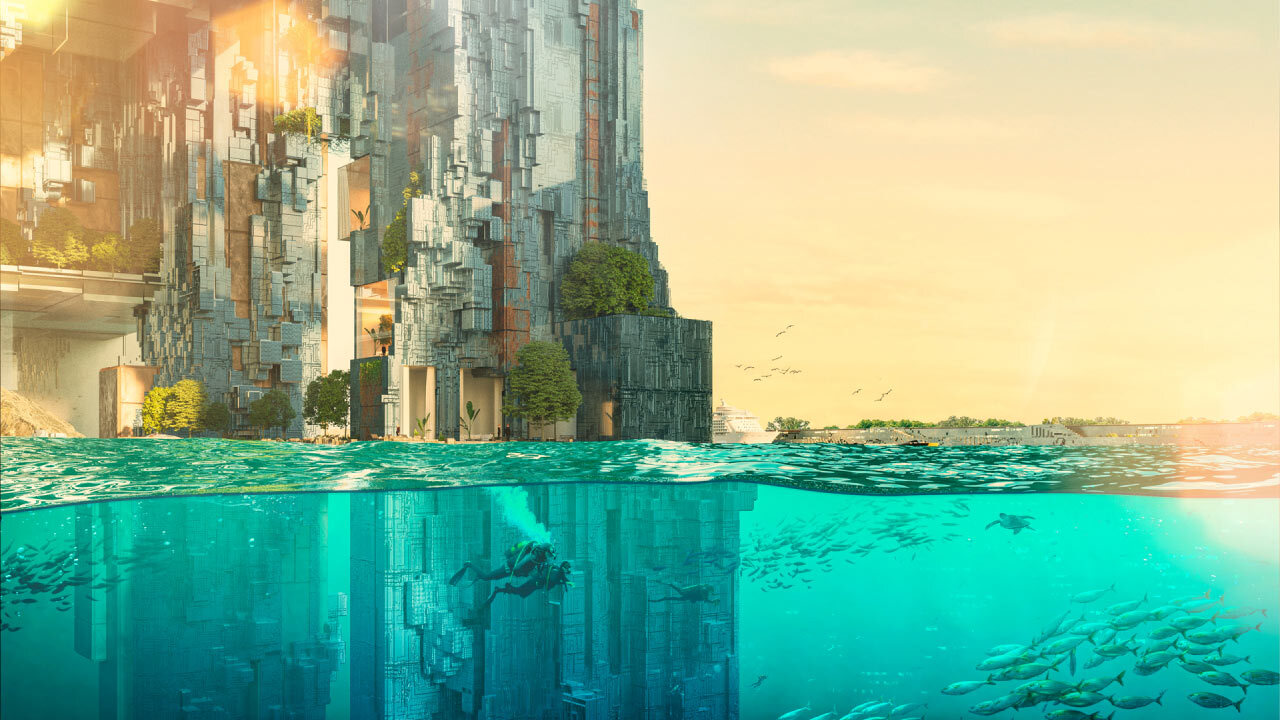
The Line, Neom. Image: Supplied
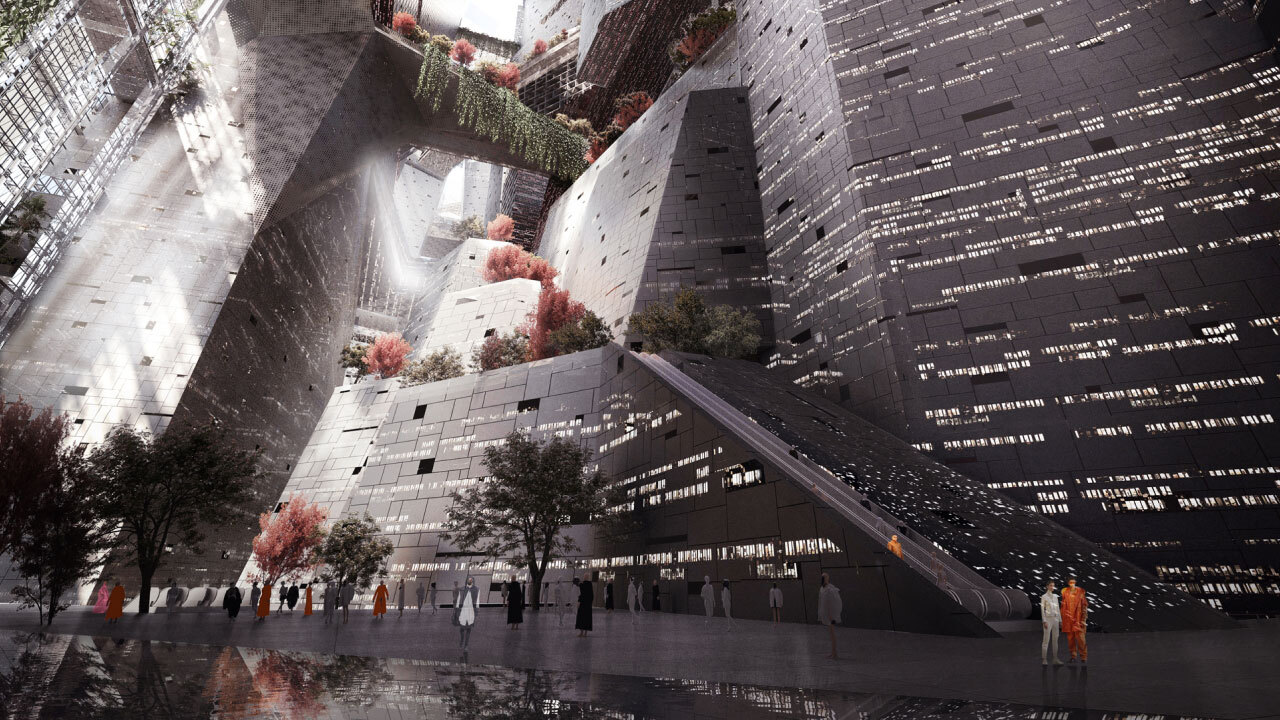
The Line, Neom. Image: Supplied
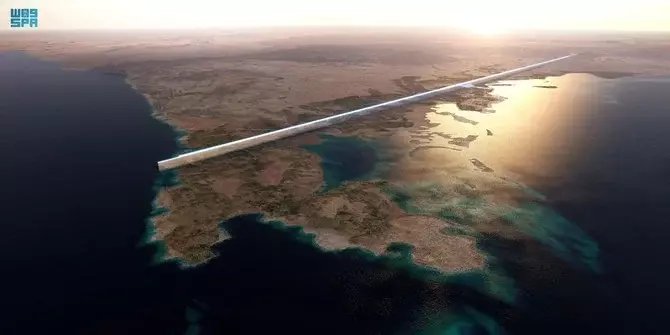
The Line, Neom. Image: Supplied
Speaking to Bloomberg News in 2017, Bin Salman said that in places like New York, there’s an inconvenient need to develop laws that would serve citizens as well as the private sector, but that in Neom, “you have no one there”, therefore, the aforementioned special economic legislations could be developed to serve the interests of investors. But at the time, even as he claimed there was “no one there”, there were tens of thousands of Saudis living in the area.
When will all this happen?
Although no date has been announced for final completion, Neom and The Line form part of the crown prince’s Saudi Vision 2030 which, among its goals, aims to reduce the country’s economic dependence on oil by diversifying its economy and developing sectors such as tourism, health and education.
Utopia? Dystopia? Too good to be true?
The initial plan for the larger Neom city within which The Line will be situated, was for occupation to begin by 2025. That plan has now been pushed out by a further five years. As reported by Bloomberg in an investigation that reportedly included interviews with some 25 current and former employees, as well as access to 2,700 internal documents, “efforts to relocate the indigenous residents of the Neom site, who’ve lived there for generations, have been turbulent, devolving on one occasion into a gun battle”.
Thousands of the residents were told in 2020 that the government would require their land. One man who resisted, Abdul Rahim Al Huwaiti, who recorded a series of videos in which he accused the government of intimidating and forcing the residents to sign over their homes, was shot dead by armed police in April 2020. The government alleged that he had weapons in his home and that he shot at them. However, after his killing, the government expanded its compensation packages, which include cash payments and a promise to grant residents land elsewhere, Bloomberg reports. The authorities have also been accused of cutting off electricity and closing schools.
In response to the forced removals as well as the killing of Al Huwaiti, Sarah Leah Whitson, the executive director of Democracy for the Arab World Now, penned an article titled Mohammed bin Salman’s Bloody Dream City of Neom, in which she wrote: “Rather than consult with the local community and seek to integrate them in the region’s ambitious plans, the government has treated its citizens like disposable objects to be replaced by shiny, new cosmopolitan settlers.
“This is what happens when a thuggish ruler declares that he, and only he, will decide the future of his country (advised and assisted by well-paid American consultants and lawyers thousands of miles away), while Saudi citizens who express their own views, particularly critical ones, are ignored, silenced, jailed, or exterminated.”
Former employees of the Neom project have told stories of numerous plans within the project that have been shelved after large financial and human resources investments. The CEO of the project, Nadhmi Al-Nasr, has also faced accusations of cultivating a toxic working culture. The Wall Street Journal reported that they had heard a recording in which he said: “I drive everybody like a slave, when they drop down dead, I celebrate. That’s how I do my projects.” This, as well as the killing of Saudi journalist Jamal Khashoggi, and accusations of human rights violations by the Saudi government, have led to numerous high-profile resignations.
Adding his voice to the widespread scepticism and criticism of the project, Henry Grabar, a writer for Slate, with a special focus on cities, writes: “Less clear is how Neom relates to Saudi Arabia. The $500 billion project promises 100 percent renewable energy, but it will live or die on the price of oil and the kingdom’s ability to sell it for decades to come. How does a country that requires women to cover their knees and shoulders expect to ‘evolve into the sustainable-fashion capital of the world,’ as Neom’s material suggests?
“How does a country where homosexuality can be punished by death and dissidents imprisoned at random expect to build a ‘vibrant city that boosts social integration, social values and cultural promotion’? How does a country that recently executed 81 people in one day expect to draw the ‘best and the brightest’ to a ‘place of unparalleled social and economic experimentation’? Well, one answer to these questions is obvious: It won’t… The cloud-capped towers, the gorgeous palaces, the solemn temples, the great Line itself — all this shall dissolve, and leave not a rendering behind.”
However, as per the aforementioned Bloomberg in-depth investigation which points out the project’s many failures and human rights abuses thus far: “It would be unfair to entirely dismiss Neom as an autocrat’s folly. Parts of the plan, such as a $5-billion facility to produce hydrogen for fuel-cell vehicles and other uses, are rooted in current economic realities, and building a global hub almost from scratch isn’t without precedent in the region; even 30 years ago, most of Dubai was empty sand.” DM/ML



















 Become an Insider
Become an Insider
The question is: who would want to live there? Immigrant experts?
Zero appeal to me. I wonder how animals would move from one side to the other? Perhaps corridors underneath the structure?
Quite ironic image – zero emission city but then there are super yachts that burn ridiculous amounts of fuel with huge carbon footprints.